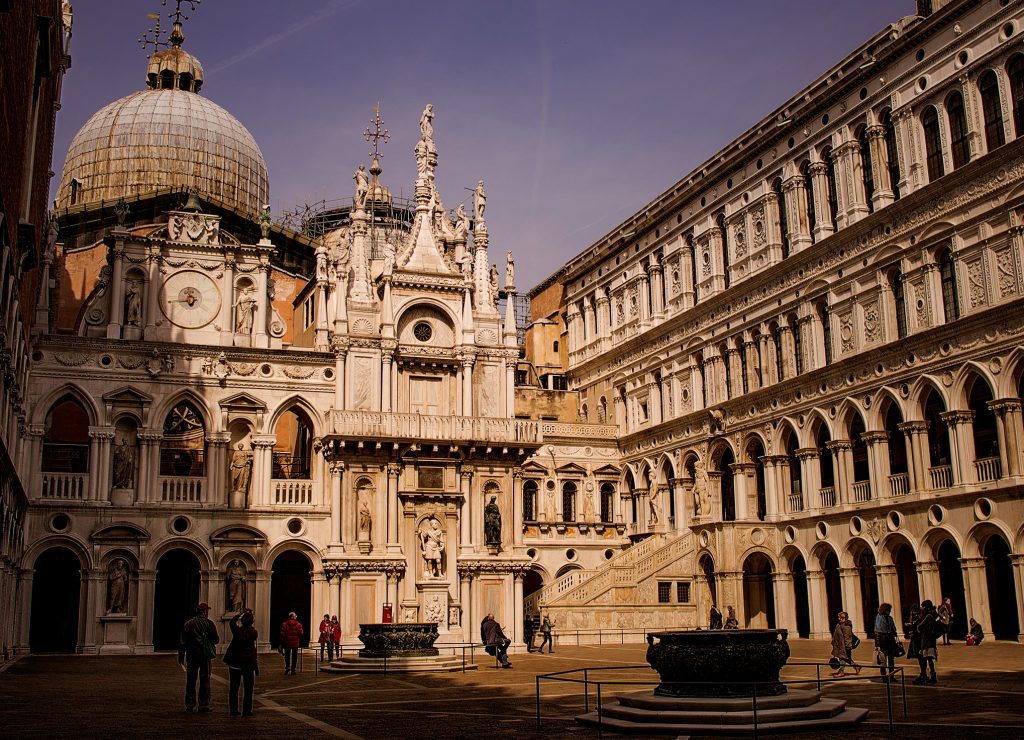I look at buildings and admire the lines and curves of a well-designed architecture. It makes me think about all the effort that has been invested towards it from the time of planning, breaking of the soil and finishing a structure built to stand the test of time. Speaking of structures that has proven its stand and showcased its beauty at the same time, here are 5 buildings that you should visit during your trip to Italy.

Palazzo Ducale di Venezia
The palace is also known as the Doge’s palace as it served as residence of the Duke of Venice. The structure was built in 1430 with inspirations of Byzantine and Oriental architecture. Over the years, parts of the palace were destroyed by fires but is continually restored. In 1483, the Doge’s apartment caught fire where they commissioned Antonio Rizzo who introduced the Renaissance design to that part of the building. In addition to that, a new structure was built alongside the canal, stretching from the Ponte della Canonica to the Ponte della Paglia.
Santuario Chiesetta Rossa
The Sanctuary of the Madonna del Monte is located in San Zenone degli Ezzelini in the province of Treviso. In 1873, parts of the church were damaged by an earthquake and it was the expertise of Antonio Carlini, a prominent Italian sculptor, that reconstructed its glory. The walk to the famous church on a hill is easy and beautiful. Upon arrival, you will also see the remains of the Ezzelini Castle where the church was built on. To this day, you can still see the tower of the castle.
The best time to visit the area is during the middle of winter on a clear day with some snow highlighting the beauty of the façade. Perhaps, during spring time where the weather is lovely and the grass is green and the flowers are in full bloom, or maybe take advantage of the dramatic motif during fall.
Scala Contarini del Bovolo
It is known for its grand multi-arched spiral staircase that makes everyone who sees it whip out their cameras and take pictures of it. Its name, del Bovolo, literally translates to “of the snail”. It was architect Giovani Candi who designed and built this in the 15th century for the Contarini family. However, the credit for the staircase goes to Giorgio Spavento who believed the staircase should be showcased on the exterior in 1499.
Despite its fame, it is not one you would casually pass by while on a walk on the streets of Venice. You would have to find it in the middle of the sestiere of San Marco. It is located on a small backstreet that requires navigating Venice’s notorious maze of narrow alleyways not far from Campo Manin. Indeed, a hidden gem.
Villa Duodo
This villa, also known as Villa Valier, is situated up on the Rocca hill in Monselice in the Veneto region. In 1592, Francesco Duodo commissioned architect Vincenzo Scamozzi who studied under the tutelage of Andrea Palladio— a renowned Renaissance architect.
By 1740, Nicolo Duodo, the grandson of Francesco Duodo, the expansion of the villa was finished. He added the secondary wing attached to the main building like an L shape. On your way to the villa, you will be greeted by 6 little churches along the hill. Thisis part of the design of Scamozzi called “Santuario delle Sette Chiese”. When you get to the top, right before the villa is the San Giorgio church which is connected to the complex with a closed corridor.
Tomba Brion
If you were to choose a place where you will be lain for eternity, wouldn’t you want it to be as serene and aesthetically pleasing as this? Plain concrete and straight lines are the main style of this cluster of small buildings in a modernist design. It was the Italian architect, Carlo Scarpa, who started designing it in 1969 for the founder of the electronics company called Brionvega, Onorina Tomasi Brion. In 1970, Scarpa was laid to rest in the site with the rest of the departed Brion family member. It is located in San Vito d’Altivole near Treviso.
The reflection pool and spacious and tranquil garden is not what you will typically expect in a cemetery. There are also unexpected touches inside the mausoleum. Like the Chinese art by the entrance, which adds a touch of softness to the sharp design. It is indeed a masterpiece of Carlo Scarpa.
Writing this article, it has made me realize that it’s not just the typical office buildings and condominiums or palaces that has great structure. All you need to do is open your eyes to the different architectural approaches through the years. Detach yourself from the concrete jungle of the city life and explore what the country life boasts of. Remember, the most humble structure is not just as it is.